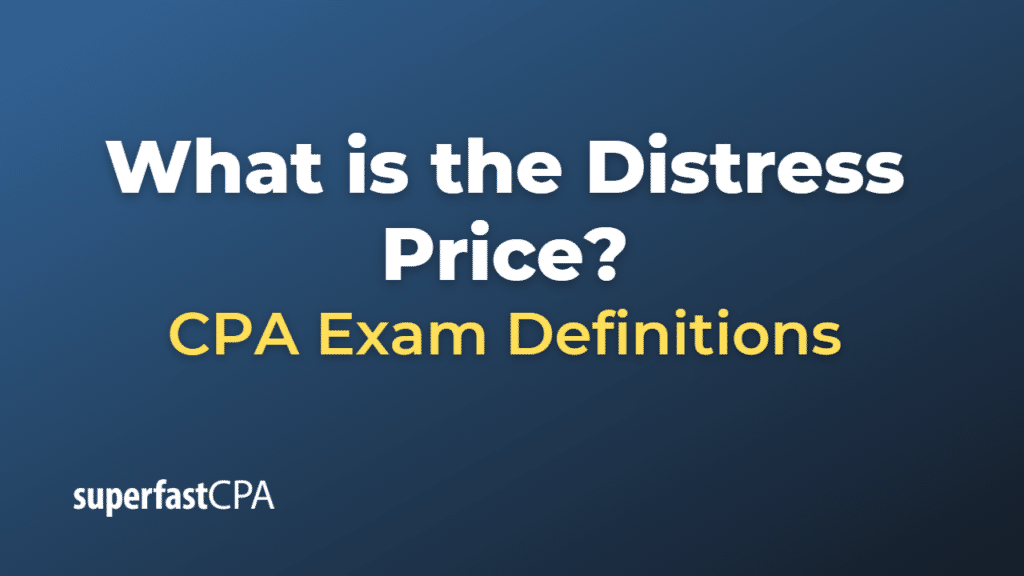Distress Price
A distress price refers to a scenario where a company or an individual is forced to sell an asset urgently, typically due to financial constraints, which results in the asset being sold for less than its market value. The seller is under “distress” and hence may not have the time or resources to negotiate for a better price or wait for an optimal market condition to sell the asset.
For instance, a company facing bankruptcy may need to quickly sell off its assets to pay creditors. In this case, because the company is under pressure to sell quickly, buyers may be able to purchase the assets at a distress price, which would be lower than what they might pay under normal circumstances.
Similarly, a homeowner who is unable to keep up with mortgage payments might need to sell their home quickly to avoid foreclosure. Potential buyers, aware of the seller’s distress, might offer a price that’s lower than the market value of the home.
It’s important to note that while buyers may benefit from distress prices, these situations are often signs of larger economic or financial issues. As a result, such purchases can come with increased risk. For example, the assets being sold may have been poorly maintained or there may be little time for thorough due diligence.
Example of the Distress Price
John owns a small restaurant business which, unfortunately, has been struggling due to a downturn in the economy. His restaurant’s location and equipment are valued at $200,000 under normal market conditions. However, John has mounting debts and needs to pay his suppliers and landlords as soon as possible to avoid bankruptcy.
Given the urgent need for cash, John decides to sell his restaurant business. He doesn’t have time for a lengthy negotiation process or to wait for a buyer who’s willing to pay the full market value. As a result, he ends up selling the restaurant for $150,000, far less than its estimated value of $200,000.
In this scenario, the $150,000 is the distress price – it’s lower than the normal market value because of the urgent financial situation John is facing. The buyer in this situation is able to purchase the restaurant at a discount, but also takes on the risk associated with a quick purchase, such as less time for due diligence.













